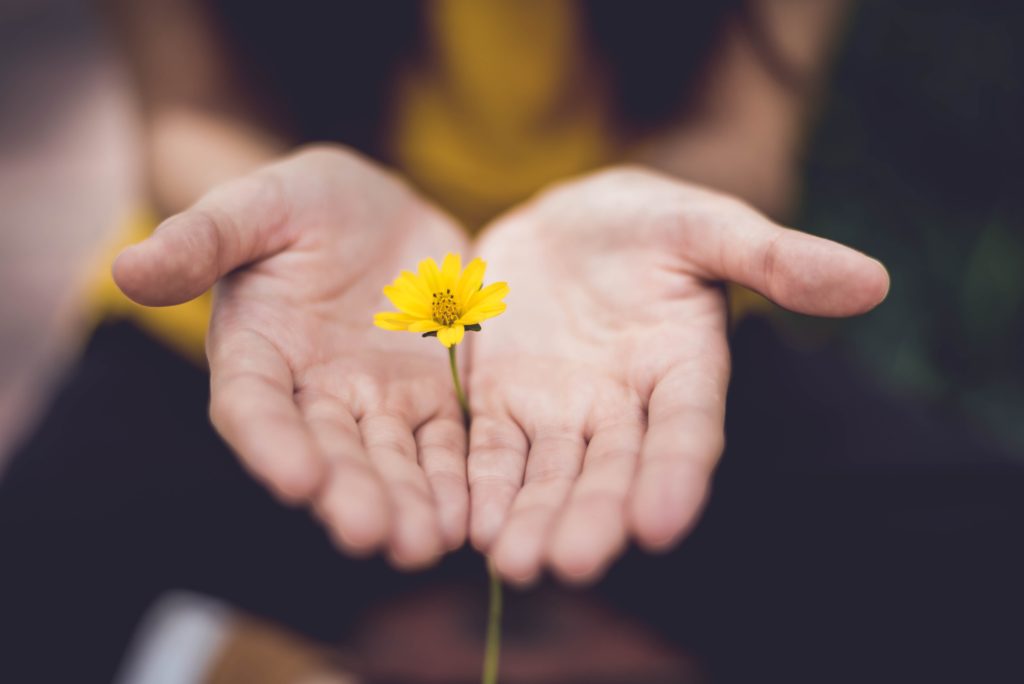
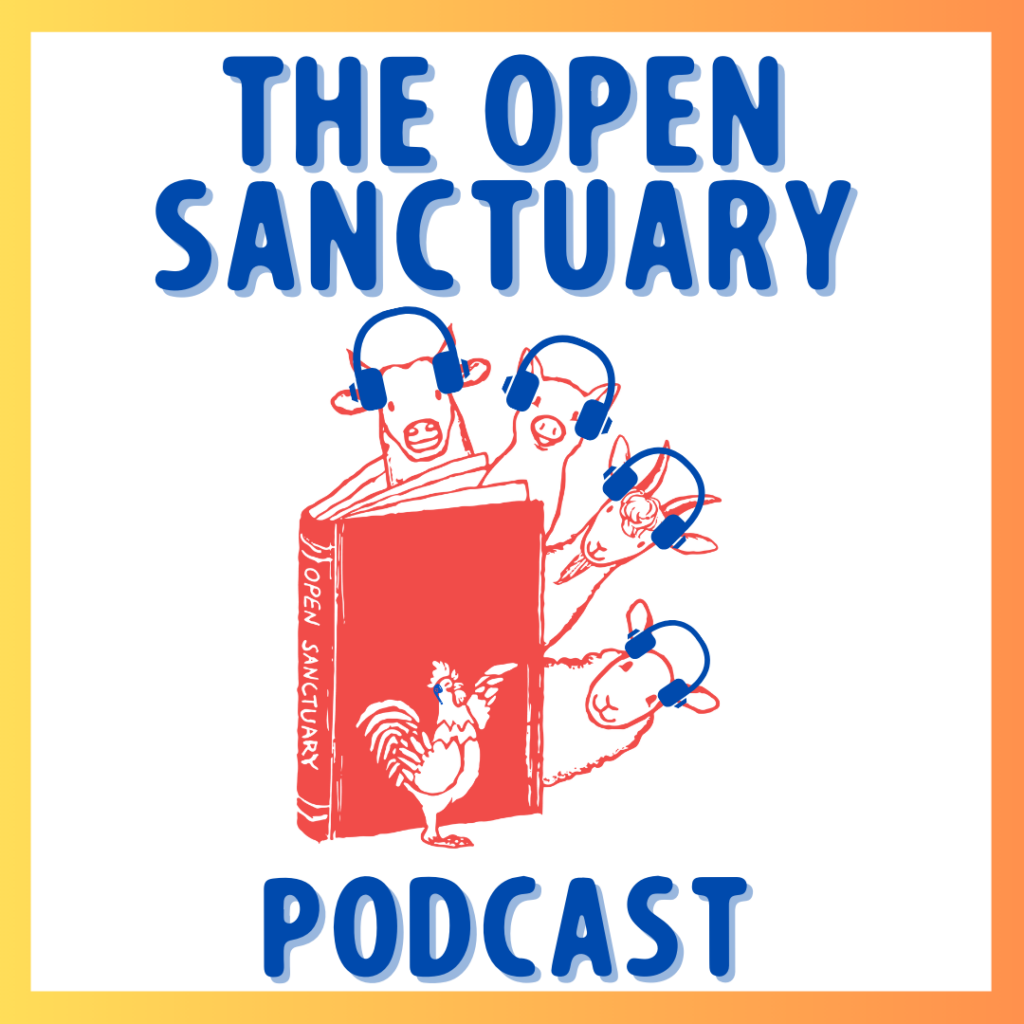
We Have A Podcast Episode On This Subject!
Want to learn about this topic in a different format? Check out our episode of The Open Sanctuary Podcast all about answering common visitor questions here!
Introduction
As sanctuary educators and representatives, one of the best parts of our job is the ongoing opportunity to facilitate experiences and provide knowledge to sanctuary visitors that allow them to deepen their understanding of and widen their circles of compassion for farmed animalsA species or specific breed of animal that is raised by humans for the use of their bodies or what comes from their bodies.. Whether you’ve just started or have been facilitating these kinds of experiences for a while now, you’ve likely realized that most of the folks who visit your sanctuary usually ask a lot of the same questions regarding farmed animals, sanctuary care, veganismA movement and way of living that seeks to eliminate the exploitation of and cruelty to nonhuman animals as much as possible. Often, veganism is defined synonymously with a plant-based diet, although veganism includes abstaining from elements of animal exploitation in non-food instances when possible and practicable as well., and more. While answers to these questions are usually dependent on how each sanctuary is uniquely positioned with respect to things like Philosophy of Care, background, size, location, and more, they’re not always easy to address! So, in our efforts to help make these kinds of tasks a little more manageable for you, we’ve created a living template with common questions your sanctuary likely gets asked and thoughtful ways you can answer them. As with every educational resource we publish, we encourage you to edit, modify, and adapt the responses to these questions based on your sanctuary and audience’s specific background and needs. This resource is intended to be a starter guide and will be updated as we think of more common questions and evolve together as a movement.
A Special Note for Sanctuary Educators Who Are Regularly Surrounded By Animal LiberationA social movement dedicated to the freeing of nonhuman animals from exploitation and harm caused by humans. Allies
For sanctuary educators who are regularly surrounded by animal liberation allies, it can be easy to slip into the mindset that adopting veganAn individual that seeks to eliminate the exploitation of and cruelty to nonhuman animals as much as possible, including the abstention from elements of animal exploitation in non-food instances when possible and practicable as well. The term vegan can also be used as an adjective to describe a product, organization, or way of living that seeks to eliminate the exploitation of and cruelty to nonhuman animals as much as possible (e.g., vegan cheese, vegan restaurant, etc.). ethics is an easy undertaking. Together, you’ve likely built a wonderful alternative way of being in relationship with animals that is not based on exploitationExploitation is characterized by the abuse of a position of physical, psychological, emotional, social, or economic vulnerability to obtain agreement from someone (e.g., humans and nonhuman animals) or something (e.g, land and water) that is unable to reasonably refuse an offer or demand. It is also characterized by excessive self gain at the expense of something or someone else’s labor, well-being, and/or existence., and this has become your norm. Although this is certainly something to celebrate, encourage, and share with the world, it’s important to remember while you are facilitating sanctuary education programs and answering the same visitor questions over and over again that transforming one’s relationship with nonhuman animals can be quite hard for a lot of folks outside of a sanctuary setting. You have and likely will receive a lot of resistance from visitors when you respond to some of these questions! While this can be incredibly frustrating at times, it’s important to remember that outside of a sanctuary setting, folks are saturated with ideas like carnism and white supremacist social structures like capitalism, colonialism, patriarchy, ableism, and others that marginalize them. Depending on their background, economic possibilities, and physical and mental capabilities, transforming their relationship with animals can be challenging and create an uneven playing field when it comes to accessibility to veganism. With this in mind, it’s important for sanctuary educators to regularly ask themselves how their educational programming and specifically, their responses to common visitor questions, could become more supportive spaces that provide the kind of community enrichment folks need to transform their relationship with animals in a positive way and maintain a compassionate way of life. One of the most important ways we can do this is by cultivating patience in our sanctuary spaces. Remaining patient with our program participants, visitors, fellow advocates, and ourselves does not require us to excuse or justify oppressive patterns, but it does remind us that unlearning oppressive patterns is a healing process that takes time. Rather than drawing on shame and guilt, patience asks us to draw on compassion and care while we facilitate our education programs and respond to visitor questions. With this by our side, we get to witness and be a part of some incredibly transformative individual and collective experiences.
Questions and Answers Related to Sanctuary Care and Management Practices
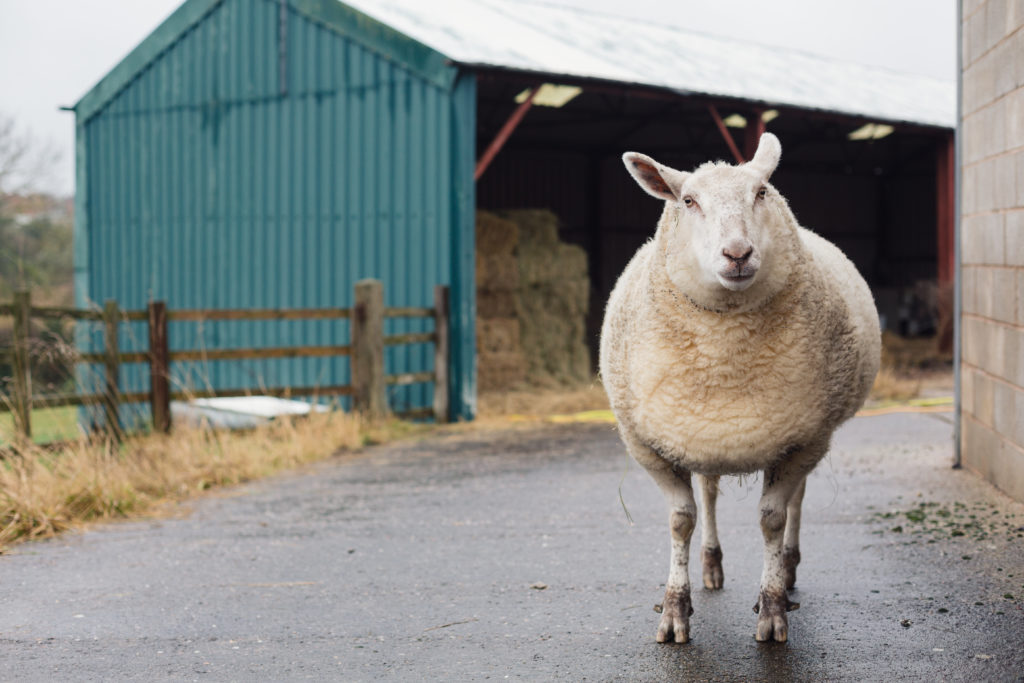
“Why Don’t You Pay to Rescue More Animals?”
RESPONSE: As tempting as it may be to pay to rescueThe act of paying money in order to acquire an animal to provide them sanctuary, typically from a farm or someone who wants to profit from the sale of the animal. Typically this term is not used in reference to acts like paying a shelter’s fees for adoption. an animal, we believe purchasing them ultimately perpetuates the cycle of animal exploitation because the money enables the farming operations from which the rescued animals came to continue to breed and purchase more farmed animals for exploitative use. We believe our money is more responsibly spent on providing lifelong compassionate care for animals who are rescued in ways that do not place money into the hands of these operations. This includes, but is not limited to animals who are abandoned, confiscated through cruelty investigations, liberated from farming operations in the aftermath of natural disasters, fall off transport vehicles, escape from live markets, and more.
“Why Don’t You Let the Residents Breed With One Another?”
RESPONSE: In an ideal world, all animals would have complete autonomyThe ability for individuals to have access to free movement, appropriate food, and the ability to reasonably avoid situations they wish to avoid. and self-determination over their reproductive systems, desires, and health. However, as humans continue to systematically and forcibly breed billions of farmed animals each year for human use, we believe it is our responsibility as an animal sanctuary to maintain as much capacity as possible to take in more liberated farmed animals that are in desperate need of a lifelong compassionate home. Allowing residents to breed would reduce our capacity to do this and limit our ability to provide responsible care to all of our residents.
“Why Can’t We Go Inside All of the Resident Enclosures?”
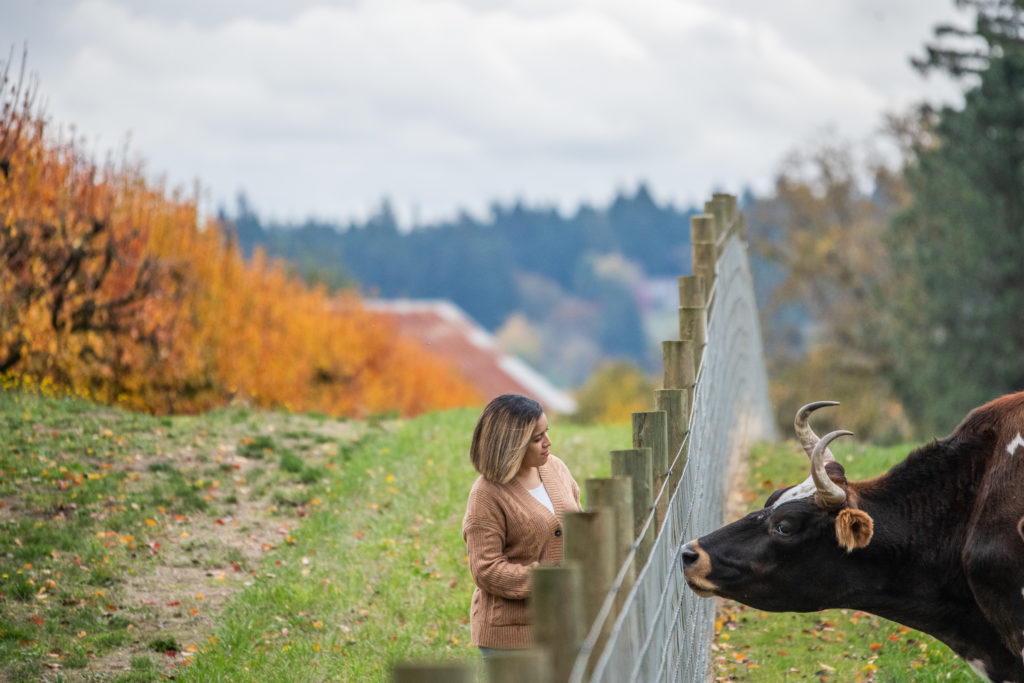
RESPONSE: Although we sometimes offer opportunities for certain residents to meet and interact with visitors inside their living spaceThe indoor or outdoor area where an animal resident lives, eats, and rests., there are many reasons why we cannot promise that this will happen. First, as a farmed animal sanctuaryAn animal sanctuary that primarily cares for rescued animals that were farmed by humans., we put the mental, emotional, and physical well-being of our residents first, which means we always allow them to decide whether or not they want to interact with visitors whenever possible. For some residents, it is very clear that they enjoy interacting with humans, and for others, it is very clear that they do not. Their interest in and ability to interact with guests largely depends on their personality, mood, and current mental, emotional, and physical state. Unlike petting zoos, which sell guaranteed interactions with animals, we do not believe animals should be exploited and commodified for human entertainment or use of any kind. Second, we follow strict biosecurity protocols to ensure the proper safety of both our residents and human visitors, which means we do not allow visitors to explore the sanctuary, open gates, or feed, give water to, and interact with any residents without appropriately-trained staff supervision or approval. The good news is, visitors often do get to greet and interact with certain residents up close and we certainly hope that is the case for you today!
“If You’re a Nonprofit, Doesn’t that Mean the Public Should Always Have Access to Your Property?”
RESPONSE: No, the public does not have unlimited access to our property. NonprofitA non-governmental organization whose primary purpose is something other than selling goods or services. organizations like ourselves need only serve a public purpose, and that does not necessarily involve providing public access. Like our corporate peers, nonprofit organizations usually have many formalities and rules that dictate when and where folks are permitted onsite. By law, the public is required to abide by those rules and formalities. Our sanctuary is open to the public from [day of week] to [day of week] from [opening time] to [closing time]. This is for the safety of our residents, our staff, and our visitors.
“How Can I Start My Own Sanctuary or Rescue?”
RESPONSE: There is a lot to consider before you start your own sanctuary! For this reason, we recommend that you start by reading the resource titled, “So, You Want to Start a Farmed Animal Sanctuary” by The Open Sanctuary Project. It provides a wonderful overview of everything you’ll want to think about first, including the varying facets and realities of sanctuary life to the many challenges that will arise along the way.
“Why Do You Spend So Much Money to Care for an Injured/Sick/Elderly/Disabled Animal When You Could Just Adopt Another One Who Doesn’t Require as Much Costly Care?”
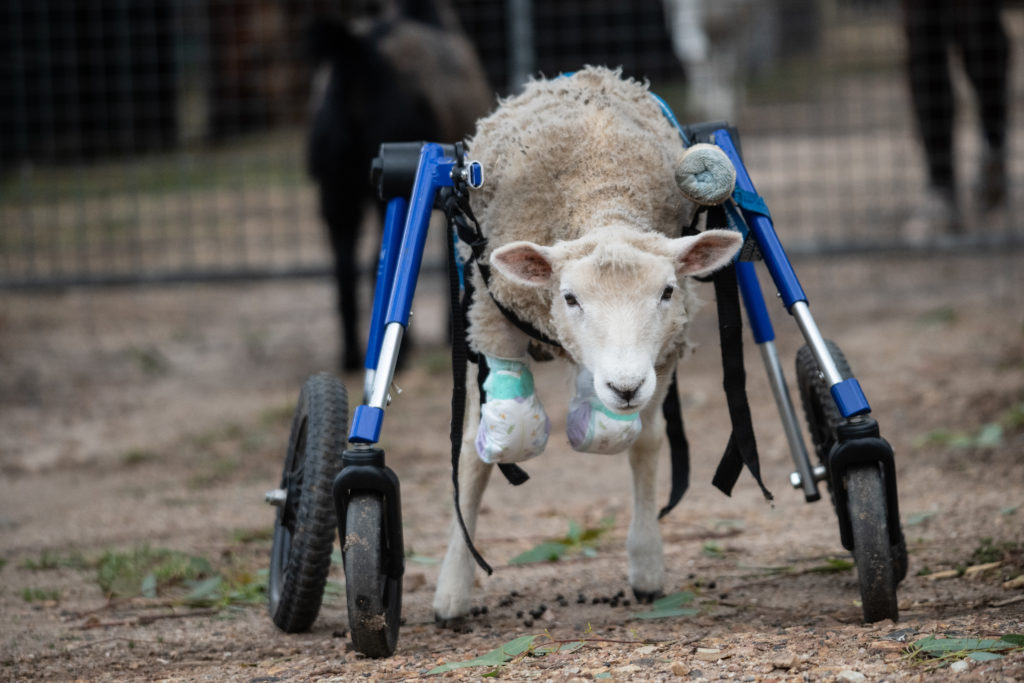
RESPONSE: Our sanctuary is dedicated to the lifelong compassionate care of every single one of our residents, whether they are young, old, healthy, sick, injured, uninjured, able-bodied, or disabled. We do not base their value or consideration for proper care on their physical, mental, or emotional state. We believe they are inherently valuable and worthy of responsible care simply because they exist.
“Why Are You Helping Animals When So Many Humans are Suffering?”
RESPONSE: Human suffering is connected to, rooted in, and upheld by many other systems of oppression, including nonhuman animal oppression. Though it can be challenging to see how human and nonhuman suffering are connected to one another, a close look at how any oppressive system works can help clarify the connection. An oppressive system is “one that functions to explain, maintain, and justify institutions, relationships, and practices of unjustified domination and subordination” (Karen Warren, Feminist Environmental Philosophy). For example, an oppressive system that is racist functions to justify the domination and subordination of all nonwhite bodies, while an oppressive system that is speciesist functions to justify the domination and subordination of nonhuman bodies. All systems of oppression are woven together in an overarching structure of hierarchy and domination. This means a commitment to dismantling oppressive systems that negatively impact humans requires the dismantling of all oppressive systems that negatively impact nonhumans as well. As an animal liberation organization, we enter into this conversation through the dimension of animal suffering and the oppressive systems that uphold it, which is why we are helping animals. By helping animals, we are also helping humans and the environment. If you’re interested in exploring these ideas further, we suggest checking out the works of the Combahee River Collective, Kimberlé Crenshaw, Patricia Hill Collins, Karen Warren, and Aph Ko.
“As an organization that advocates for the rights of nonhuman animals while encouraging folks to go vegan, do you also advocate for the rights of the people who pick your produce?”
RESPONSE: We recognize farm worker exploitation as a grave form of injustice that needs to be addressed as vehemently as farmed animalA species or specific breed of animal that is raised by humans for the use of their bodies or what comes from their bodies. exploitation since they are intimately interconnected systems of oppression that are upheld by one another. Unfortunately, there are many natural and processed vegan foods that are grown, picked, or created at the expense of human suffering, which is why we encourage everyone to think critically about all of their food choices and do the best they can to mitigate the suffering of both humans and nonhumans. One of the most impactful ways we can do this is by getting to know where our food actually comes from and then basing our purchasing decisions on this knowledge. If you discover that one of your favorite food stores or brands isn’t sufficiently transparent about where their products come from, ask them directly what they’re doing and how they’re tackling human and nonhuman exploitation. If they’re still not clear, consider switching to stores or brands that are more transparent and active against exploitation.
“Why Do Your Bird Residents Need to Be in Runs? Aren’t They Happier Being “Free”?”
RESPONSE: Like most animals, farmed birds love to roam, explore, lay in the sun, scratch in the dirt, and forage outside. However, most farmed birds are very vulnerable to predation, so we provide all of our bird residents with a predator-proof outdoor space (aviary/run) during the day and a predator-proof indoor space during the night. Our fully enclosed outdoor aviaries/runs protect them against aerial predators as well as predators who can climb and jump.
“Why Can’t Your Duck and Goose Residents Go Back to the Wild?”

For Farmed Animal Sanctuaries Who Provide Care for Domesticated Ducks and Geese
RESPONSE: There are several reasons why they cannot be released into the wild. First, all of the ducks and geese at our sanctuary are domesticatedAdapted over time (as by selective breeding) from a wild or natural state to life in close association with and to the benefit of humans animals, meaning their particular species was adapted over time from a wild or natural state in close association with and to the benefit of humans. As a result of this, domesticated animals don’t have the necessary skills or capabilities to find proper food, water, shelter, and safety in a wild setting. Instead, they have been selectively bred by humans to rely on humans for these things, making it unlikely that they would survive for very long in the wild. Their reliance on humans and inability to fly well (or at all) also makes them much more vulnerable to harmThe infliction of mental, emotional, and/or physical pain, suffering, or loss. Harm can occur intentionally or unintentionally and directly or indirectly. Someone can intentionally cause direct harm (e.g., punitively cutting a sheep's skin while shearing them) or unintentionally cause direct harm (e.g., your hand slips while shearing a sheep, causing an accidental wound on their skin). Likewise, someone can intentionally cause indirect harm (e.g., selling socks made from a sanctuary resident's wool and encouraging folks who purchase them to buy more products made from the wool of farmed sheep) or unintentionally cause indirect harm (e.g., selling socks made from a sanctuary resident's wool, which inadvertently perpetuates the idea that it is ok to commodify sheep for their wool)., either intentional or accidental, in a wild setting.
Second, releasing any nonnative domesticated animal into the wild is illegal, environmentally destructive, and harmful for native wild animals and plants. Domesticated ducksUnless explicitly mentioned, we are referring to domesticated duck breeds, not wild ducks, who may have unique needs not covered by this resource. and geeseUnless explicitly mentioned, we are referring to domesticated goose breeds, not wild geese, who may have unique needs not covered by this resource. lack the genetic imprint to know how and where to migrate when temperatures drop. This means they would spend all their time in one place and be forced to compete for resources with their native wild peers. In addition to taking food away from wild populations and desecrating native plants, domesticated ducks and geese would also likely introduce deadly diseases into wild populations.
For Animal Sanctuaries Who Provide Lifelong Care to Unreleasable Wild Ducks and Geese
RESPONSE: There are several reasons why they cannot be released back into the wild. Many of them suffered from injuries or illnesses that have permanently limited their ability to find sufficient food, water, shelter, and safety in the wild. Others were rescued as orphaned babies and unfortunately imprinted on their human caregivers before they were old enough to be released. This also limited their ability to develop and express certain skills and behaviors necessary for survival in the wild. For these reasons, we have chosen to provide them with lifelong compassionate care in as natural of a setting as possible.
Questions and Answers Related to “Meat“

“Nonhuman Animals Eat Other Nonhuman Animals. Why Can’t We, Too? Haven’t Humans Evolved to Eat Meat?”
RESPONSE: The question is not whether we can eat nonhuman animals, but whether we should eat them. We can and have eaten animals for thousands of years. In fact, there is research to suggest that our human ancestors began eating other animals because it enabled them to consume more calories with less effort, which, in turn, may have led to certain evolutionary changes in our bodies and brains that make us the modern human beings we are today. None of this information, however, means that animal consumption is biologically necessary for the vast majority of humans today. In most cases, a healthy plant-based dietA diet that abstains from all animal products, including milk and eggs. A plant-based diet is synonymous with “strict vegetarianism”, and is the dietary component of someone practicing veganism. Those following a plant-based diet may or may not also choose to avoid non-food animal products or avenues of animal exploitation. can provide the proper amount of nutrition that our bodies need in order to thrive. In contrast, most nonhuman animals who kill other nonhuman animals for food do need to consume them out of biological necessity in order to survive.
“What About “Humane Meat”?”
RESPONSE: From a vegan perspective, there is no such thing as “humane meat” since there is no way to humanely slaughter someone who does not want to die. There are “humane” standards and labels, however, that are implemented either voluntarily or involuntarily by some farmers, but since there is no single regulated definition of “humane meat”, these standards are entirely arbitrary. Some might include less painful methods of slaughter, prohibition of painful practices such as debeaking and tail docking, larger cages, no cages, larger pens, or access to pasture, but the institution of these standards does not mean animals do not suffer inside these operations. Quite the contrary! “Humane” farming operations still participate in incredibly harmful practices, including the cruel disposal of all female farmed animals once their reproductive capabilities decline, the immediate slaughter of all male chicks when they are born, the exportation of all male dairy calves to veal farmsFor-profit organizations focused on the production and sale of plant and/or animal products. for slaughter, the forced indoor confinement of thousands of animals, inadequate vet care, and more. While the word “humane” may sound appealing to consumers who are reluctant to give up animal-derived products, it’s nothing more than a misleading marketing term that perpetuates animal exploitation and harm.
“What Are Your Thoughts on Hunting for Sustenance in Indigenous Communities?”
For Settler Activists and Sanctuary Representatives
RESPONSE: Although we do not endorse the hunting of nonhuman animals, we also do not believe it is appropriate for animal liberation organizations and activists like ourselves to intervene in the traditional practices of Indigenous peoples because it would not acknowledge our role as settlers in the perpetuation of colonization and oppression of Indigenous peoples. While it is an ongoing challenge for us to reconcile our dedication to animal liberation with supporting traditional Indigenous hunting practices, we recognize that colonial patterns of oppression are tools that are still being used to exploit and erase both Indigenous peoples and nonhuman animals, which is why animal liberation cannot be achieved unless we simultaneously support Indigenous sovereignty. We also recognize that Indigenous peoples have cared for and protected nonhuman animals for thousands of years – long before the current predominantly Eurocentric animal liberation movement came into existence.
What Do We Mean by “Settler”?
We utilize the term settler here to mean any non-Indigenous person whose ancestors came and settled on land that had been inhabited by Indigenous people.
“What Would You Do if you Were Stranded on a Deserted Island and the Only Way to Survive Was by Killing an Animal and Eating Them?”
RESPONSE: If put into an extreme situation like this, most humans would do something that is against their ethical values in order to survive, and vegansIndividuals who seek to eliminate the exploitation of and cruelty to nonhuman animals as much as possible, including the abstention from elements of animal exploitation in non-food instances when possible and practicable as well. would likely be no different. However, these unlikely survival situations and hypothetical scenarios do not justify our daily exploitation, slaughter, and consumption of animals when we don’t have to, especially when there are so many healthy plant-based foods for us to thrive on.
“Would you consider eating your sanctuary residents after they pass away naturally?”
RESPONSE: The short answer is no, we would not consider it. For one, we do not view any animal’s dead body as an opportunity to extract resources, whether for food or anything else. Second, a “natural” death is usually defined as one that occurs due to an internal factor that causes the body to shut down, such as cancer or heart disease. As a sanctuary, we work very hard to provide the highest quality of care possible for our residents, which means we usually know when someone is suffering from disease or illness before they die. We also attempt to treat any resident’s disease or illness with responsible veterinary care in order to mitigate as much suffering as possible, and this sometimes includes compassionate euthanasia at the end of their life. So, even if we did view a resident’s death as an opportunity to extract “food” from their body, it would not be safe or advisable to consume them since they were sick and the drugs used to euthanize them could sicken and kill anyone attempting to eat their remains.
“What about reducetarianism, flexitarianism, and Pescetarianism?”
RESPONSE: We view any reduction in nonhuman animal exploitation and consumption a net positive for nonhuman animals, humans, and the planet. However, we also view any and all nonhuman animal exploitation to be detrimental to nonhuman animals, humans, and the planet. So, we encourage everyone to think very critically about their daily lifestyle choices and consumption and do the best they can to mitigate as much suffering as possible. While pescetarians typically omit land animals from their diets, their regular consumption of aquatic animals who are caught inside the harmful throes of modern agriculture still contributes to a tremendous amount of nonhuman animal suffering and habitat desecration. For folks who are able to consider alternatives to reducetarian, flexitarian, and pescetarian lifestyles, we recommend looking into all the delicious nutritious whole foods and processed plant-based options that are available in many grocery stores today! For example, tofu, banana blossom, jackfruit, and mushrooms are all wonderful plant-based substitutes for fish. There are also a lot of companies that have developed their own processed fish alternatives, such as Good Catch, Gardein, The Plant-Based Seafood Co., New Wave Foods, May Wah Vegetarian, and more!
“What Would Happen to Animals if We Stopped Eating Them?”

RESPONSE: Great question! Several things would happen. First, billions of animals would stop being bred for human consumption and use each year, which means farmed animal populations would decline and return to healthier numbers. The remaining farmed animals would likely either go to sanctuaries, rewild themselves, or die. Second, there would be more food to feed humans because the millions of tons of grain that it takes to feed and raise farmed animals for human consumption would now be available to nourish humans. Third, greenhouse gas emissions would decline drastically. Currently, modern agriculture is responsible for over 11% of global greenhouse gas emissions, making it one of the top contributors to climate change. Fourth, threatened wildlife habitats, along with the threatened wild animal species that live in them, would begin to recover. Modern agriculture is the number one driver of species extinction, namely due to habitat loss caused by clearing land and desecrating water for farmed animals. Fifth, a shift away from animal consumption would likely drastically improve public health. Doctors believe many leading causes of death are related to the overconsumption of animal-derived products.
“What Would Happen to Farmers if Everyone Stopped Eating Animals?”
A plant-based future would require a significant remodeling of our modern food system, which would mean a major transition for today’s farmers. Though this isn’t necessarily an easy task, early signs of a shift towards a plant-based future are emerging as new pathways for farmers and farm workers become more financially viable. For example, several farmers that historically raised farmed animals or grew crops for farmed animals have already successfully transitioned to growing crops like peas, oats, mung beans, hemp, mushrooms, and more for the plant-based market. These transitions are made even more possible by organizations like Miyoko’s Creamery and Mercy For Animals who are leading farm transition projects that help animal farmers currently struggling with exploitative labor practices and inhumane conditions to experiment with and transition to alternative practices, proteins, and products. As long as these transitions continue to succeed and more innovative policies get put on the table, we imagine a future where farmers and farm workers would fare much better than they do today.
“What Are Some Good Plant-Based Substitutes for Animal Meat?”
RESPONSE: Fortunately, there are a lot of wonderful plant-based substitutes available for animal meat! Our favorite alternatives include tofu, tempeh, seitan, beans, mushrooms, jackfruit, and lentils. There are also a lot of companies that have developed their own processed plant-based meats, such as Lightlife, Beyond Meat, Impossible Foods, Gardein, and Field Roast.
“Why Do You Eat “Fake” Meat? Why Eat Food that’s Meant to Taste Like Animals?”
RESPONSE: The answer to this question depends on the person you ask! For some folks who eat plant-based meat, they do it because they simply enjoy the taste that comes without as much nonhuman animal suffering. For others, eating plant-based meat feels familiar and comfortable. Many adults today have grown up with meat as a staple part of their cultural diet and are happy to be able to keep it as such without contributing to as much nonhuman animal suffering. Plant-based meat can also be an attractive food source for folks who simply do not want to give up meat or aren’t quite ready to transition to a whole foods vegan diet.
“How Do You Get Enough Protein/Iron/B12, etc.?”
RESPONSE: It is a common misconception that humans can only get proper amounts of protein/iron/B12 from animal-derived products. However, there are a variety of plant-based foods and supplements that can provide the proper amount of protein/iron/B12 that your body needs. Protein-rich plant foods include lentils, beans and other legumes, tofu, tempeh, seitan, chickpeas, peanuts, almonds, quinoa, nutritional yeast, and more! Iron-rich plant foods include lentils, chickpeas, beans and other legumes, cashews, chia seeds, hemp seeds, pumpkin seeds, kale, dried apricots and figs, quinoa, fortified breakfast cereal, and more! Although adequate amounts of B12 can be found in plant-based foods like nutritional yeast, marmite, fortified soy and almond milk, fortified cereal, tempeh, and more, most vegans find it easier to take a plant-based B12 vitamin supplement each day or week.
“What Do You Feed Your Sanctuary’s Cats?”
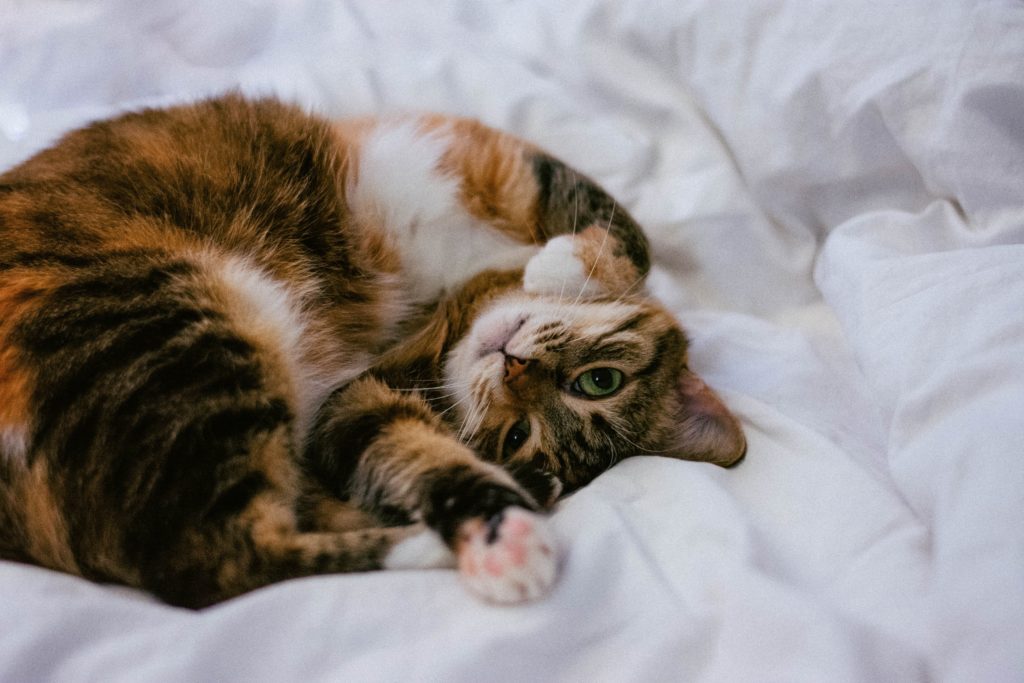
For Animal Sanctuaries that Feed Their Cats an Animal-Based Diet
RESPONSE: Great question! We feed our cat residents an animal-based diet. Although this topic has been subject to a lot of debate recently, there is growing veterinary evidence to suggest that some cats can thrive on a nutritionally sound plant-based diet without suffering any adverse health consequences. However, plant-based diets are still relatively new for cats and we do not currently feel there is quite enough evidence to support it since there are other studies that demonstrate they do not meet the nutritional needs of cats, particularly those with health issues that require a specialized diet that the current commercial plant-based diets cannot help with. There are also studies showing that plant-based diets could potentially cause health issues in cats, such as urinary tract disease. As more peer-reviewed research is gathered and published to support healthy plant-based diets for cats, however, we look forward to continually reexamining it as future possibility for our sanctuary cat residents.
For Animal Sanctuaries that Feed Their Cats a Plant-Based Diet
RESPONSE: Great question! We feed our cat residents a plant-based diet. Although this topic has been subject to a lot of debate recently, there is growing veterinary evidence to suggest that cats can thrive on a nutritionally sound vegan diet without suffering any adverse health consequences and we have found this to be the case here. Although plant-based diets are still relatively new for cats, we work closely with a veterinary nutritionist and source the food from a reputable manufacturer to ensure our cat residents receive a well-designed plant-based diet that is complete to meet all of their specific nutritional requirements.
Questions and Answers Related to Resident Eggs
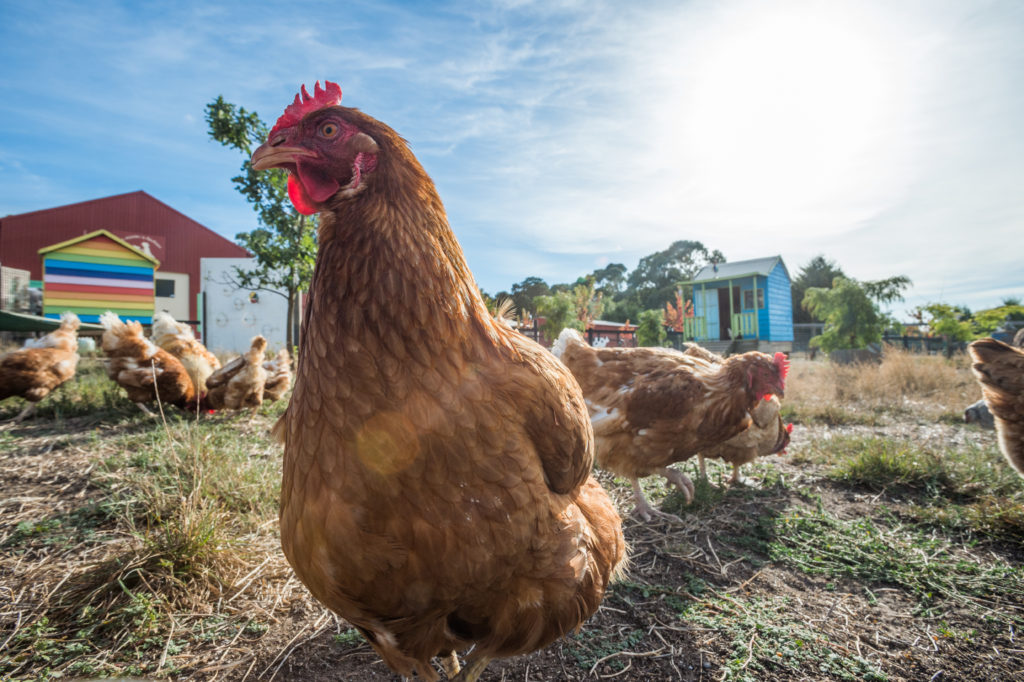
“What Do You Do With the Eggs of Your Female Bird Residents?“
For Sanctuaries that Collect Resident Eggs
RESPONSE: First, we collect their eggs every day in order to prevent residents from breeding and attracting predators. We also collect them in order to evaluate the current health status of our residents since the appearance of someone’s eggs can tell us a lot about their health. Then, we either feed the eggs that are deemed safe for consumption back to the individuals who would benefit from the additional calories and nutrients, feed them to wild animals along the outskirts of our property to prevent predation, or compost them. For some folks, composting eggs might seem wasteful, but that has a lot to do with the fact that most of us have grown up in a society that tells us that eggs from certain individuals are commodities. In reality, just because someone lays an egg does not mean we have to find a way to consume it.
For Sanctuaries that Implant Some of their Female Bird Residents
RESPONSE: Some of our bird residents actually don’t lay eggs anymore, and that’s because we implant them with something called Suprelorin F. Suprelorin F is an implantation system similar in function and concept to a human’s implant-style birth control system. It prevents specific hormones from being released in a hen’s body and in turn, prevents eggs from being produced. We do this for some of our hens because it gives them a break from the taxing cycle of egg overproduction and helps them heal from health challenges that were exacerbated by frequent laying. Egg overproduction and the subsequent reproductive health issues that follow are direct consequences of very harmful selective breeding practices that occur in modern agriculture.
“Why Don’t You Let Fertilized Eggs Develop and Allow Chicks to Hatch?”
RESPONSE: In an ideal world, all birds would have complete autonomy and self-determination over their reproductive systems, desires, and health. However, as humans continue to systematically and forcibly breed billions of farmed birds each year for human use, we believe it is our responsibility as an animal sanctuary to maintain as much capacity as possible to take in more liberated farmed birds that are in desperate need of a lifelong compassionate home. Allowing potentially fertilized resident bird eggs to develop and hatch on our property would reduce our capacity to do this and limit our ability to provide responsible care to all of our farmed bird residents. This is one very important reason why collect eggs from our bird residents on a daily basis. This prevents potentially fertilized eggs from developing into viable babies.
“Why Don’t You Sell the Eggs Your Hens Lay?”
RESPONSE: While it may seem innocent enough to raise funds by selling a hen’s eggs, it can send the message that it is okay to commodify and exploit hens and their body parts for human use – something that we and other sanctuaries try very hard to avoid. Fortunately, we have lots of other ways to raise funds for our residents and staff that do not inadvertently cause direct or indirect harm to hens!
“What’s Wrong With Eating Chicken Eggs? You Don’t Have to Kill Them to Get Their Eggs, Right?”
RESPONSE: Like other farmed animals, modern domesticated chickens have been selectively bred and exploited for human use. Many of these chickens are bred to lay an incredibly unnatural amount of eggs each year. Unlike their wild counterpart, the Red Junglefowl, who lays approximately 10 to 15 eggs in an entire year, a modern domesticated “egg-laying” hen has been bred to lay between 250 to 300 eggs in a year. Considering that it takes around a day for an egg to be formed, this means these hens could be in the midst of producing an egg year-round – a highly taxing and potentially dangerous process. Egg overproduction can lead to fatal reproductive tract diseases such as cancer, egg yolk impaction, peritonitis, egg binding, osteoporosis, and malnutrition.
Although a domesticated chicken can live up to 10 to 15 years of age, hens caught inside the egg industry are deemed useless around age 1 or 2 as their reproductive capabilities begin to decline and are consequently sent to slaughter for cheap products such as chicken pot pie and petAn animal who spends regular time with humans in their home and life for companionship or human pleasure. Typically a small subset of animal species are considered to be pets by the general public. food. Of the few hens that are spared this fate and sent to sanctuary, they usually suffer from a myriad of health complications related to massive egg production.
“What’s Wrong With Eating Eggs From Backyard Chickens?”
RESPONSE: While it may seem innocent enough to eat eggs from backyard chickens who are seemingly well cared for, there are several reasons why this practice perpetuates harm against them and other chickens. For one, it can send the message that it is okay to commodify and exploit chickens and their body parts for human use. Secondly, the majority of backyard chickenThe raising of chickens primarily for the consumption of their eggs and/or flesh, typically in a non-agricultural environment. operations purchase their birds from exploitative hatcheries that brutally kill all male chicks. Male chicks, or roosters, are deemed useless in the egg industry because they will never lay eggs. Oftentimes, however, there are male chicks who go undetected in hatcheries and are sent along in the mail with female chicks to backyard operations, where their sex becomes evident and problematic just a few months later. In addition to being deemed useless for egg-laying purposes, roosters are also almost universally unwanted in backyard settings because of zoning restrictions, noise ordinances, and lack of sufficient understanding and space to accommodate them and their unique behaviors. For all these reasons, most backyard operations either abandon these roosters, send them to slaughter, or try to give them to sanctuaries. Thirdly, chickens are commonly viewed as unworthy of proper veterinary care and consideration in backyard settings, which greatly impacts their long-term health and well-being. Just as roosters are deemed useless in exploitative egg operations, so are hens who are either sick or unable to lay as many or any eggs anymore. Instead of providing them with proper care and allowing them to live out their natural lifespan, most backyard operations send these birds to slaughter and immediately replace them with younger hens. For all of these reasons, we do not support the purchase or consumption of backyard eggs. Fortunately, there are a lot of wonderful substitutes available for eggs these days! Whether you are looking for an egg substitute for baking or cooking, there are plenty of options to choose from that do not cause direct or indirect harm to chickens!
“What Are Some Good Plant-Based Substitutes for Eggs?”
RESPONSE: Fortunately, there are a lot of wonderful plant-based substitutes available for eggs! Whether you are looking for an egg substitute for baking or cooking, there are plenty of options to choose from. For baking, our favorite egg alternatives include aquafaba, applesauce, and bananas. For cooking, our favorite egg alternatives include tofu, chickpea flour, and black salt. There are also a lot of companies that have developed their own processed egg alternatives, such as Eat Just’s Just Egg, Follow Your Heart’s Vegan Egg, and Neat Foods’ Neat Egg.
Questions and Answers Related to Other Animal-Derived Products
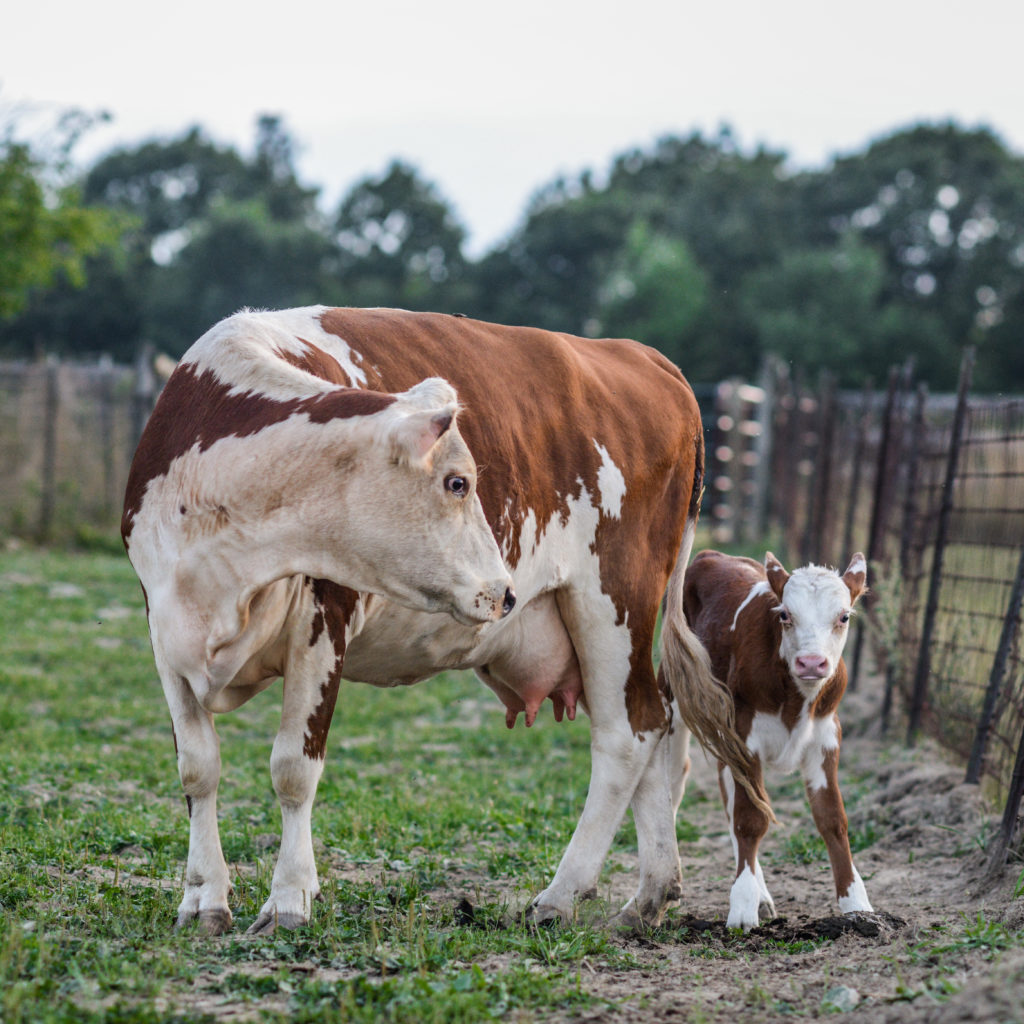
“What’s Wrong With Eating Products Made With Milk? You Don’t Have to Kill Cows to Get Milk, Right?”
RESPONSE: Like humans, cowsWhile "cows" can be defined to refer exclusively to female cattle, at The Open Sanctuary Project we refer to domesticated cattle of all ages and sexes as "cows." are mammals who only produce milk when they are pregnant or right after giving birth in order to feed their babies. In the dairy industry, however, cows are perpetually and forcibly impregnated so that they constantly produce milk for human consumption. Once they give birth, their calves are taken away from them only 12-24 hours postpartum so that humans can hook them up to machines and forcibly milk them. Their stolen calves suffer one of two terrible fates. Male calves are deemed useless in the dairy industry because they will never produce milk and are quickly sold at auction to exploitative farming operations that will slaughter them for “veal” when they are only 18-20 months old. Female calves will usually be kept inside the dairy industry and, like their mothers, perpetually and forcibly impregnated in order to produce milk that will then be sold for human consumption. When female cows turn 4-5 years old, their reproductive systems will slow down and their ability to produce milk will decline. At this point, the dairy industry will deem them useless and slaughter them for cheap “products” like “hamburger”.
Goat and Sheep Dairy
If you have goat and sheep residents that were exploited for their milk, you might get a similar question related to them. Although goat and sheep dairy production are smaller industries than cowWhile "cow" can be defined to refer exclusively to female cattle, at The Open Sanctuary Project we refer to domesticated cattle of all ages and sexes as "cows." dairy, they carry nearly all of the same exploitative hallmarks.
“Cows Need to Be Milked, Don’t They?”
RESPONSE: No, cows do not need to be milked by humans. Like humans, cows are mammals who only produce milk when they are pregnant or right after giving birth in order to feed their babies. If cows were not exploited by humans for their milk, their bodies and their babies would be able to safely help them regulate their milk production on their own. In the dairy industry, however, cows are perpetually and forcibly impregnated so that they constantly produce milk for human consumption. Once they give birth, their calves are taken away from them only 12-24 hours postpartum so that humans can hook them up to machines that forcibly milk them. The stolen calves suffer one of two terrible fates. Male calves are deemed useless in the dairy industry because they will never produce milk and are quickly sold at auction to exploitative farming operations that will slaughter them for “veal” when they are only 18-20 months old. Female calves will usually be kept inside the dairy industry and, like their mothers, perpetually and forcibly impregnated in order to produce milk that will then be sold for human consumption. When female cows hit 4-5 years of age, their reproductive systems will slow down and their ability to produce milk will also decline. At this point, they will be deemed useless by the dairy industry and sold to slaughter for cheap “products” like “hamburger”.
“What Are Some Good Plant-Based Substitutes for Dairy Cheese and Other Products that Usually Contain Milk?”
RESPONSE: Fortunately, there are a lot of wonderful plant-based recipes and substitutes for dairy cheese and other products containing dairy that are made from a variety of whole plant foods, including nuts, soy, seeds, root vegetables, and nutritional yeast. There are also a lot of companies that have developed their own processed dairy alternatives that come in as many styles and flavors as you can imagine! These companies include Daiya Foods, Kite Hill, Miyoko’s Creamery, Field Roast, Violife, Follow Your Heart, Treeline, and So Delicious. A lot of grocery store chains have also created their own generic brand versions of these dairy alternatives.
“Why Don’t You Sell the Wool You Shear Off Your Sheep Residents?”
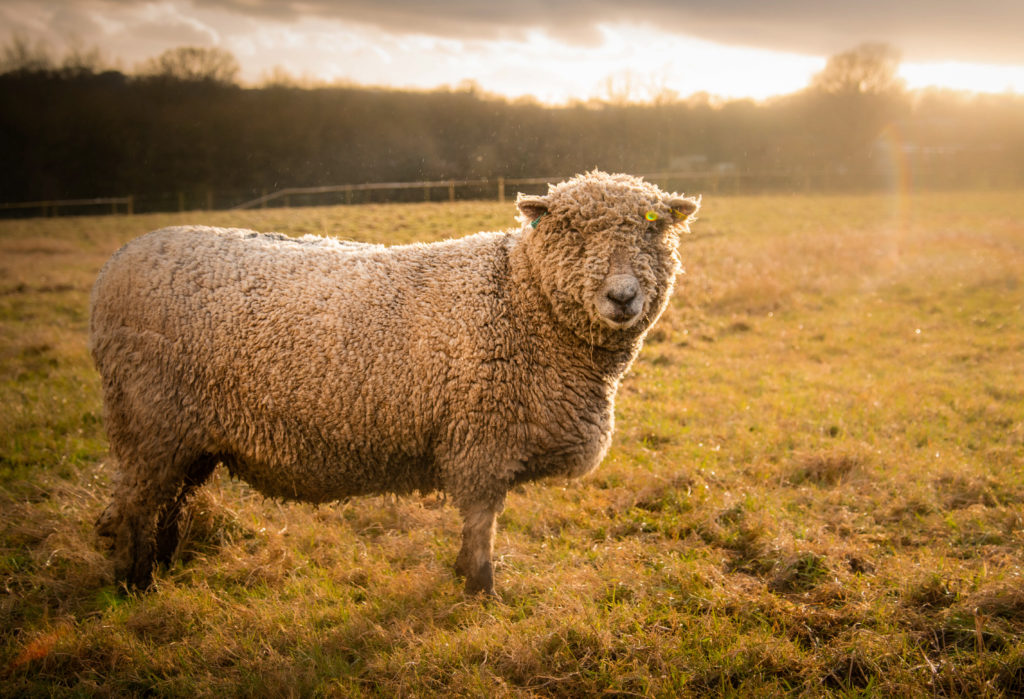
RESPONSE: While it may seem innocent enough to raise funds by selling sheep’s wool, it can send the message that it is okay to commodify and exploit them and their body parts for human use – something that we and other sanctuaries try very hard to avoid. Fortunately, we have lots of other ways to raise funds for our residents and staff that do not inadvertently cause direct or indirect harm to sheep!
“What’s Wrong With Buying Wool Products? You Don’t Have to Kill Sheep to Make Those Products, Right?”
RESPONSE: When people think of wool, they often make the incorrect assumption that wool production is natural and cruelty-free. However, the majority of wool products that are sold today are a result of selective breeding that forces domesticated sheep to grow unnaturally thick coats that require trimming in order to prevent issues such as overheating. In contrast, wild sheep naturally produce only enough wool to protect them from hot and cold weather. Sadly, domesticated sheep bred for wool are often kept in crowded, unhygienic environments that are stressful and dangerous. When it is time to be shorn, sheep are frequently injured, wounded, and maimed by commercial sheep shearers who typically pin them to the ground and use electric clippers to shear them as fast as possible. Many sheep raised for their fiber are also shorn in the wintertime with little remaining warmth after they’ve lost their coats, resulting in freezing-related illness and death. Around four to five years of age, sheep are often no longer capable of producing as much fiber as the wool industry requires and are consequently sent to slaughter for their flesh, called “mutton”. In Australia, the world’s largest producer of wool, sheep who are deemed useless for wool production are transported on massive, overcrowded ships to areas of the world where there is a higher demand for “mutton”. These voyages can last up to three weeks.
“Why Don’t You Sell the Fiber You Shear Off Your Alpaca and Llama Residents?”
RESPONSE: While it may seem innocent enough to raise funds by selling an alpaca or llama’s fiber, it can send the message that it is okay to commodify and exploit alpacas, llamas, and their body parts for human use – something that we and other sanctuaries try very hard to avoid. Fortunately, we have lots of other ways to raise funds for our residents and staff that do not inadvertently cause direct or indirect harm to alpacas or llamas!
“What’s Wrong With Buying and Eating Honey? You Don’t Have to Hurt Bees to Get It, Right?”
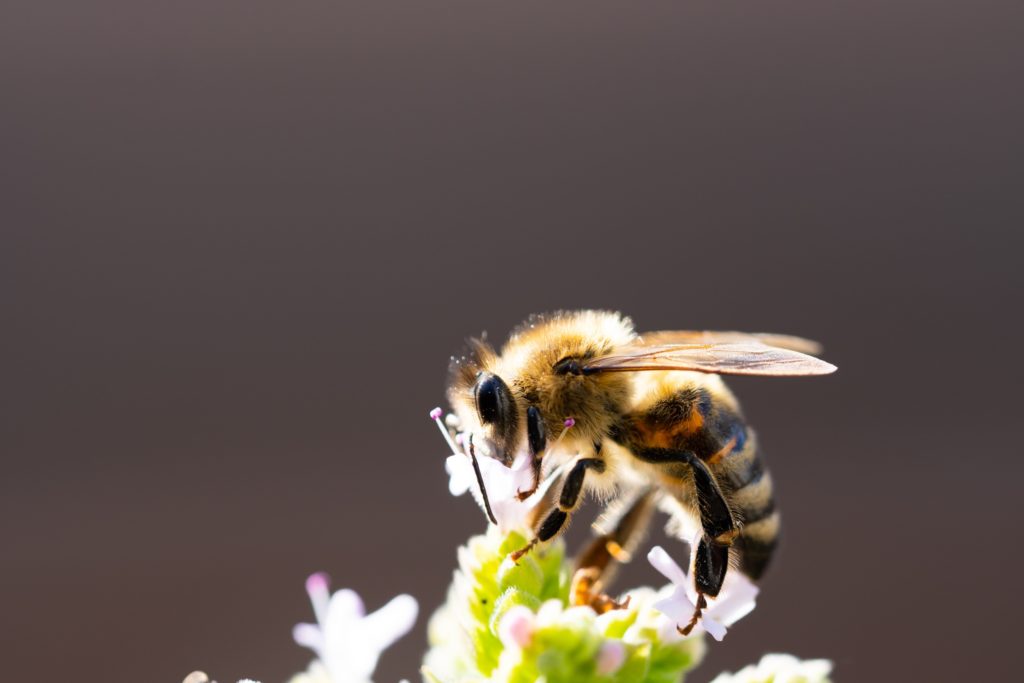
RESPONSE: Unfortunately, the majority of honey that is sold at grocery stores today comes from commercial bee farming operations that exploit the bodies and behaviors of bees through a myriad of cruel practices in order to maximize profit. This, of course, comes at the cost of the bees’ well-being. In commercial operations, bees are selectively bred to produce as much honey as possible for human consumption. Sadly, this practice can narrow the honey bee population’s gene pool and makes them more susceptible to diseases that then spread to and kill other natural pollinators, including other vitally important species of native bees! This practice also necessitates the removal of the honey from the hive in order to sell it. Honey is an essential source of food and energy that is made by bees specifically for bees. Once commercial beekeepers remove the honey, they either replace it with a significantly less nutritious sugar substitute for the rest of the season or kill the entire hive because it is often cheaper to kill them than it is to make sure they have enough food to get them through Winter. Commercial beekeepers will also frequently clip the wings of each hive’s queen bee in order to prevent her from leaving. This guarantees that she will not try to produce a new colony elsewhere and instead focus her efforts solely on the maximum production of honey in one hive. Commercial operations will sometimes also kill her if she is not producing a productive-enough hive. Fortunately, humans can thrive without honey and there are a lot of wonderful substitutes available for it! Our favorite alternatives to honey include agave nectar, maple syrup, molasses, and date syrup.
Questions and Answers Related to Veganism
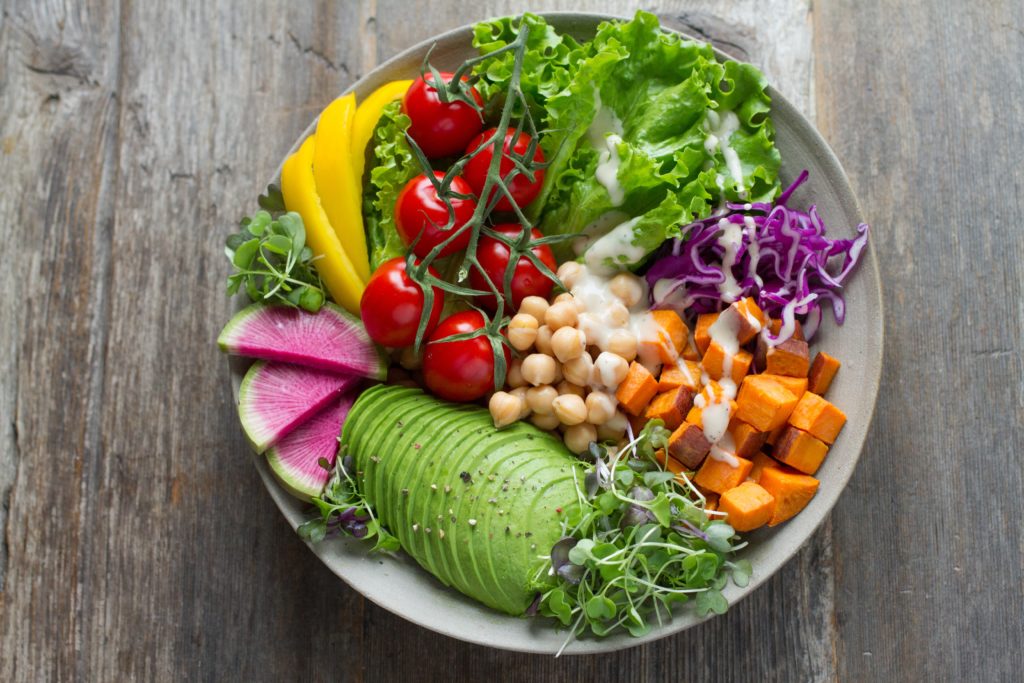
“Is It Expensive to Be Vegan?”
RESPONSE: Although there are many low-cost plant-based foods for people to buy at the grocery store, financial accessibility to these foods and the stores that carry them depends greatly on every individual’s physical location, economic status, and background. We feel it’s important to simply do the best we can given our own budgets and locations and reach out for help or guidance whenever possible. Our top recommendations for keeping a vegan diet budget-friendly are to 1) build it around whole foods, both fresh and frozen, such as fruits and vegetables, whole grains, beans, legumes, tofu, nuts, and seeds, 2) build a grocery budget and list in advance of your trips to the store, 3) compare prices between popular brand names and generic brands, and 4) buy, prepare, and cook what you can in bulk. For more information on how to practice veganism on a budget, check out The Food Empowerment Project for a wonderful list of resources and recipes!
“How Can I Tell If a Food Product, Personal Care Product, Apparel Product, or Textile Product Has Parts of An Animal In It? How Can I Tell If a Product Is “Cruelty-free”?”
RESPONSE: Great question! First, any unprocessed plant food is naturally vegan. This includes things like fruit, vegetables, beans, legumes, seeds, and nuts. Second, any packaged food that says “Suitable for Vegans” or has the “Certified Vegan” logo on it is vegan-friendly. If it does not have one of these labels, you should check the product’s ingredients list and allergen information. The ingredients list is comprehensive and will include any animal by-products. Although some of these can be a little confusing and overwhelming at first, you’ll quickly learn what ingredients to look for and avoid! A quick internet search can help you with this. Some common animal-derived ingredients include whey powder, casein, albumen, bone char, butter fat, carmine, gelatin, lactose, lard, l-cysteine, mono and di-glycerides, shellac, and vitamin D3. Any product that contains milk, eggs, or shellfish will clearly say “Contains milk, eggs, or shellfish” at the bottom of the ingredients list under “Allergen Information”.
For personal care products, cosmetics, apparel, and textiles, it’s equally important to scan the ingredients and materials list on the product’s packaging, label, or tag. Some common animal-derived ingredients and materials in these kinds of products are beeswax, lanolin, keratin, musk, pearls, tallow, leather, fur, silk, wool, cashmere, and angora. Please keep in mind that vegan products and products that aren’t tested on animals are not necessarily the same thing. Many personal care products and cosmetics that do not contain animal-derived ingredients have been tested on animals. Likewise, many personal care products and cosmetics that have not been tested on animals do contain animal-derived ingredients. To figure out whether or not something has been tested on animals, scan the product for the Coalition for Consumer Information on Cosmetics (CCIC) leaping bunny logo or PETA’s cruelty-free bunny logo. Beware: the terms “cruelty-free” and “not tested on animals” are not regulated, which means any product with those labels could have been tested on animals.
Questions and Answers Related to Plants
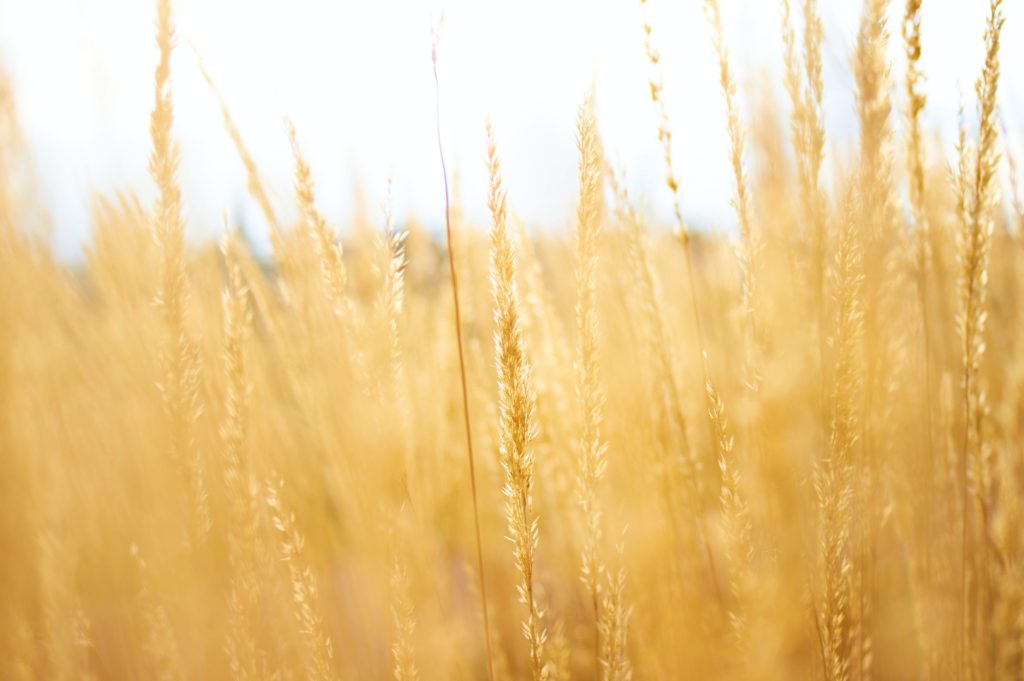
“Do Plants Have Feelings and Feel Pain?”
RESPONSE: Pain is an experience that incorporates communication between stimuli, receptors, cells, and, importantly, a central nervous system (a brain and a spinal cord). Animals, including humans, suffer from pain because we consciously process it through our central nervous systems. Our central nervous systems make us aware of the pain, which is a subjective response based on complex emotions.
Although plants do sense and respond to things in their environment, such as sun, soil, water, sound, surrounding objects, and threats, in incredibly sophisticated ways, they are not reacting to them consciously or subjectively because they do not process these things from a central nervous system. While we are learning more and more fascinating information about plants each year, there is currently no clear evidence to suggest that plants can experience and show anything beyond a mechanical response to stimuli.
“Doesn’t Harvesting Plant Crops Also Kill Animals?”
RESPONSE: Yes, unfortunately harvesting plant crops, particularly monoculture crops, kills approximately 7.3 billion wild animals every year. However, more than half of the world’s crops are grown to feed farmed animals, not humans. This means farmed animal agricultureThe human production and use of animals in order to produce animal products, typically for profit. is responsible for the deaths of more than 3.65 billion wild animals as well as the deaths of between 70 billion and 150 billion farmed animals each year. Consuming and using mostly animal-derived products kills far more animals than consuming and using mostly plant-derived products.
Sources
What Does “Philosophy of Care” Mean at the Open Sanctuary Project? | The Open Sanctuary Project
The Differences Between an Animal Sanctuary and a Petting Zoo | The Open Sanctuary Project
Biosecurity Part 1: Introduction | The Open Sanctuary Project
So, You Want to Start a Farmed Animal Sanctuary | The Open Sanctuary Project
Creating a Good Home for Chickens | Tara Hess, The Open Sanctuary Project
Creating a Good Home for Ducks | The Open Sanctuary Project
Creating a Good Home for Geese | The Open Sanctuary Project
Crafting Compassionate Euthanasia Policies for Your Animal Sanctuary | The Open Sanctuary Project
What Should a Sanctuary Do With Residents’ Eggs? | The Open Sanctuary Project
Chickens: How We Got Here | Julia Magnus and Mckenzee Griffler, The Open Sanctuary Project
Sheep: How We Got Here | Tara Hess and Mckenzee Griffler, The Open Sanctuary Project
Warren’s Introduction to EcoFeminism | Karen J. Warren
Global Animal Slaughter Statistics and Charts | Bas Sanders, Faunalytics
How Much Have You Saved? | The Vegan Calculator
Our Global Food System is the Primary Driver of Biodiversity Loss | UN Environment Programme
Statistics | Food and Agriculture Organization of the United Nations
Vegetarian Versus Meat-Based Diets for Companion Animals | Andrew Knight and Madelaine Leitsberger
Field Deaths in Plant Agriculture | Bob Fischer and Andy Lamey








